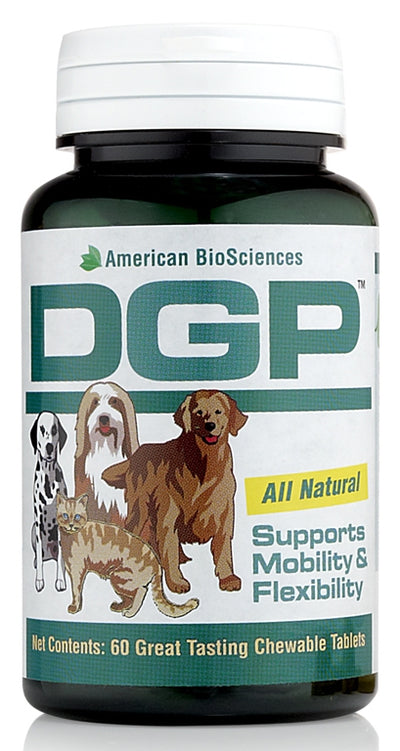What is Inflammation? (How to Control & Reduce It Naturally)

Inflammation. A word that can strike fear into the hearts of many and make you instinctively flex your fingers. While inflammation has definitely caught our attention, especially as we age, our associations with inflammation as the “bad guy” may be overstated. Is there a place for this perceived foe in our everyday lives? Is there such a thing as good inflammation? Read on for the whole story about how inflammation works in the body, and how to manage it well.
What is Inflammation?
The truth is inflammation is a good thing in some cases. It can be a great sign that your immune system is coming to the rescue after an injury or an infection. Inflammation means your white blood cells are marching into the area to fight infection and get the healing process underway.
Inflammation is also a way that your body defends itself against harmful bacteria and viruses. Did you know that fever is an inflammatory response? The word inflammation stems from the Latin word inflammare, which means “to set on fire.” Many microbes that cause illness survive and thrive when your body is at normal temperature, but a fever raises your temperature and creates an environment where it’s difficult for those harmful microbes to survive. So, fever is a sign that the body is doing its job to tackle some kind of challenge.
Types of Inflammation
Acute Inflammation
Swelling and fever are examples of acute inflammation at work. This type of inflammation serves a distinct purpose in helping you recover. Some temporary pain or soreness can remind you to take it easy and rest, or even stay off that ankle after a bad turn. (We are looking at you, weekend fitness warrior!)
Think of acute inflammation as having 3 phases:
- Inflammation activates—responding to an issue such as injury or foreign bacteria. Cells release key molecules that act as “flares,” and the body responds by sending oxygen, nutrients, and immune cells.
- In the restore phase, the work of healing is carried out. Tissue repair begins, and new cells and blood vessels are formed if needed.
- The last phase is to recover—preparing for the next round of work. The area of injury has re-stabilized and immune cells rebalance. The system resets and gets ready for the next challenge.

Chronic Inflammation
Chronic inflammation is different. This type is when your body stays in a perpetual state of activation, and your immune system continues to deliver white blood cells. Your body acts like it is under constant immune threat, and it continues to fight in the form of inflammation. Chronic inflammation can last for weeks or even months. Experts are still learning why chronic inflammation occurs.
Think of inflammation as having a garden that you want to keep well hydrated. If you turn your sprinkler on for a short time each day to water your garden, you have created a nice, manageable cycle of addressing and resolving the problem of dryness as it arises. But what if you left your sprinklers for two weeks straight, 24/7? Then you would have quite a mess on your hands. This is similar to what happens in your body with inflammation and why balance is necessary. You would not want to shut off inflammation altogether because then your body would be missing a key function (think not watering your garden at all). But you would also want to avoid a prolonged, unnecessary response that does not turn off.
Symptoms of Inflammation
As mentioned above, soreness, swelling, and fever are common symptoms of acute inflammation and show that the immune system is doing its job.
Symptoms of long-term inflammation can be trickier and may even be undetectable (it’s sometimes even called “silent” inflammation). Check-in with your healthcare provider if you are having lasting issues, such as fatigue or feeling generally unwell. It is possible to run tests to look for certain types of proteins that help show whether you may need extra inflammation-balancing support.
Inflammatory Diseases
In health terminology, a disease with “-itis” in the name has associations with inflammation.
Arthritis is a common example of chronic inflammation. It is a continuing immune response in the joints that is unable to self-regulate or resolve. The immune system turns on automatically (hence the term auto-immune disease) and does not turn back off. The once helpful lymphocytes and macrophages now actually work against the body’s joint structure, resulting in pain and limited motion.
Another type of inflammation you may be unaware of is neuroinflammation. Neuroinflammation describes an inflammatory response in the brain, often associated with aging. As we age, an immune response may be triggered in the brain and the long-term inflammation that occurs may increase our odds of becoming depressed or anxious.
Be sure to talk with your healthcare provider if you have concerns or questions about any condition or disease, including inflammatory bowel disease (IBD) or pelvic inflammatory disease (PID).
Causes of Inflammation
Are we adding fuel to our inflammation fires with our daily lifestyle? The answer is, probably yes… in the form of certain foods. Ayurveda, a traditional medicinal system that has been practiced for over five thousand years, has a common saying that springs to mind when it comes to our body and inflammation. It is said in Ayurveda, “There are three opportunities for you to heal or poison yourself every day. We call them breakfast, lunch, and dinner.”
So, let us dig into the food-inflammation connection.

Foods that Can Cause Inflammation
Yes, the foods you eat could be adding to your inflammation. The most common culprit? Added sugar. Research shows that including sugar-sweetened beverages (sodas with added sugar) in the diet resulted in higher C-Reactive Protein levels (CRP). CRP increases when there is inflammation in your body. Sugar and high fructose corn syrup consumption can also lead to higher body mass and obesity, which may lead to Type 2 diabetes. Researchers have found ties between those who have type 2 diabetes and higher levels of inflammation in the body.
Processed meats tend to be high in saturated fats that can also cause inflammation within the body. One study points to a vegetarian diet or the supplementation of fish oil helping to support inflammation levels in the body of those who had been diagnosed with rheumatoid arthritis.
A high Omega-6 to Omega-3 ratio is becoming more common, as our diets are flooded with corn and canola oil. The ideal ratio of these dietary fats may be as low as 1 to 1. However, the typical Western diet over-delivers Omega-6, especially in corn-fed meats and refined vegetable oils. A dietary imbalance of these fats can skew the body’s ratio of Omega-6 to Omega-3 as high as 20 to 1. So keeping an eye on your Omega-6 intake is important, because if your Omega balance is out of whack, it may lead to more inflammatory conditions in the body.
Conventional Treatments for Inflammation
Conventional treatments for inflammation usually revolve around non-steroidal anti-inflammatory drugs (NSAIDs). These drugs, which include aspirin and ibuprofen, work by blocking a group of enzymes known as COX (cyclooxygenase) enzymes. These enzymes produce prostaglandins in the body, and prostaglandins are found in high numbers in areas of inflammation. A certain type of prostaglandin called PGE2 is known for causing the swelling, redness, and pain associated with inflammation.
When NSAIDs slow down the production of prostaglandins, this can result in a reduction in pain or fever, but it can also result in indigestion, an increase in blood pressure, and slower blood clotting. It is important to note that prostaglandins play an important role in protecting the stomach’s mucosal lining. Peptic ulcers may develop after long term use of NSAIDs due to the degradation of the stomach lining.
Herbs and Spices that Balance Inflammation
Hippocrates, an ancient Greek physician who is considered a “Father of Medicine,” famously said, “Let food be thy medicine and medicine be thy food.” This is exceptionally on point when talking about several herbs and spices that support inflammation balance in the body.
Do herbs and spices work differently than NSAIDs on inflammation pathways? The answer is yes.
Ginger
Remember how we said that NSAIDs block COX enzymes? NSAIDs block both COX-1 and COX-2. That is why NSAIDs affect the stomach lining the way they do, because COX-1 inhibition turns off the repair of the mucosal stomach lining. Herbs act differently. For example, Ginger contains certain phytonutrients like gingerols and shogaols, which both inhibit COX-2, but not COX-1.
This may explain why Ginger has such impressive research when it comes to pain relief. Like a 2017 study that concluded that 500 mg of Ginger was just as effective on controlling pain after surgery as 400 mg of Ibuprofen. Ginger also had a statistically significant effect on reducing the symptoms of osteoarthritis in the knee, including a reduction in pain after walking and when standing.
Turmeric
Another outstanding herb with inflammation-balancing benefit is the “King of Herbs,” Turmeric. Some may be surprised to know that Turmeric is a member of the Ginger family. Turmeric has research showing that it may block NF-KB, a gene regulator involved in the processes of immune and inflammatory responses. Turmeric also has outstanding antioxidant capabilities.
A 2016 review of 8 randomized human clinical trials showed that Turmeric may be beneficial for alleviating symptoms of joint pain and inflammation.
A part of Turmeric, called Curcumin, has been the subject of much research as an individual compound. Curcumin makes up 3-5% of the weight of the Turmeric plant and some regard it as Turmeric’s most important nutrient where inflammation is concerned. But Curcumin, while exciting, lacks bioavailability (meaning it is tough for your body to absorb it). Curcumin is often paired with a black pepper extract to have it absorb rapidly into your body (while also absorbing anything else you should happen to take with it).
There is another part of Turmeric called Turmerones, which are found in the oily parts of the plant that are usually tossed aside to get the Curcumin. Turmerone research suggests that Turmerones may be the key to helping Curcumin absorb easier. Check out our dedicated blog on Turmeric benefits and uses to learn more!
Black Seed (Nigella)
An up-and-coming herb that is making waves is Black Seed, or Nigella sativa. Black Seed made a name for itself with some compelling research showing that it was helpful to those who had Metabolic Syndrome when paired with Turmeric. Metabolic Syndrome is the combination of high blood pressure, high cholesterol, high blood sugar and high body fat.
Black Seed was also found to reduce arthritis symptoms, inflammatory markers, and swollen joints in a 2016 study.
Anti-Inflammatory Diet
There are also regular foods that may help to balance inflammation in the body. Fermented dairy products like yogurt and kefir were found to help reduce inflammation by improving the gut microbiome.
Other foods that support healthy inflammation balance in the body are:
- Fish oil and fatty fish, like wild salmon
- Green leafy vegetables, like Kale and Spinach
- Fruits
- Almonds and walnuts
- Olive oil
You will find many of these foods are part of the popular Mediterranean diet, which includes fatty fish, vegetables, whole grains, herbs, and olive oil. The Mayo Clinic refers to the Mediterranean diet as a heart-healthy eating plan.























Leave a comment